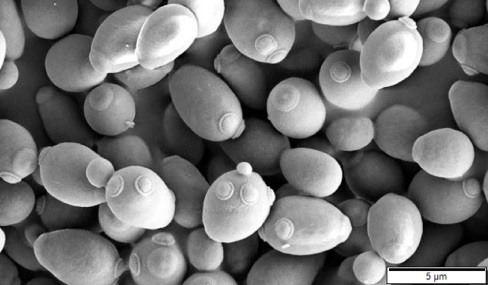The future of genetic tech: one rule for all in microbiology and biotechnology

Professor Ed Louis FRSB on consolidating the regulations covering a multitude of microbial genetic technologies
September 8th 2021
Microbes were the first genetically modified organisms and have been the origin of virtually all the genetic technologies now used for improving traits in animals and plants. Recent advances in gene-editing are also used in various microbes, particularly eukaryotic ones like baker’s yeast and other fungi used in biotechnology, biopharma and the food and beverage industries, and are subject to the same considerations as in plant and animal use.
There are several considerations for the regulation of modified microbes depending on whether they are the product, still associated with the product, or are used only for manufacturing a product that is purified away from the microbe cell factory. There are also different public viewpoints depending on the product, and public perceptions are an important consideration in new regulations. I will use the baker’s yeast Saccharomyces cerevisiae to discuss these various issues, but they generally apply across the microbial landscape.
S. cerevisiae has been used for decades to produce heterologous proteins like human insulin and human albumin, genetically modified with foreign DNA to express the protein of interest. After initial strict controls in the early days, the regulation of genetically modified yeast is more fitting with its GRAS/QPS status (‘generally recognised as safe’/ ‘qualified presumption of safety’) where risk assessment is concerned more with the product than the host.
These products are well accepted as medicines, passing strict regulations on purity, toxicity, and efficacy, independent of being produced by a GMO. Using new gene-editing techniques (such as CRISPR) on the yeast factory for improving production of such proteins doesn’t require a different regulatory framework than more traditional genetic modification approaches.
Yeast is also used to produce platform, commodity and high value chemicals, and although genetic modification has been used to improve their production with gene editing now coming into picture. Again, different regulations for modification versus editing microbes in biotechnology uses are not necessary. Where regulations need consideration and consolidation is when yeast (or other microbes) are used in food and beverage production, either for human consumption or for animal feed. Here public perception and acceptance has driven a lot of the regulation found in different countries.
Genetic modification in yeast is generally not accepted by the public for food and beverage production, and industries avoid GM products because of this - traditionally yeast improvement for these industries has come from selection, mutagenesis, and breeding. However, even some natural processes are not allowed, such as protoplast fusions, which fall under GM regulation in some frameworks.
Virtually any change in DNA can be made using yeast’s very efficient homologous recombination, such that even with GM intermediates, the end result will be a yeast with no detectable foreign DNA. Such a yeast is no different from one that was derived from a spontaneous or induced mutation or from breeding to introgress a desired variant from another strain. It is therefore as safe as one naturally derived.
Gene editing offers the same ability to make any change and can be used more efficiently and in situations where the traditional homologous recombination approaches aren’t feasible. In the brewing and wine industries, there is a drive for improved strains to meet consumer demands (lower alcohol, improved flavour profiles, etc.) as well as production demands (reduced costs in time and energy, reduced water consumption, etc.) and GE has the potential to meet these demands.
However, without a consolidated, science-driven regulatory framework, where public/consumer perceptions are considered, such improvements may not come to fruition.
Professor Ed Louis FRSB is Director of Centre for Genetic Architecture of Complex Traits at the University of Leicester.
Bernardi, B. & Wendland, J. Homologous Recombination: A GRAS Yeast Genome Editing Tool. Fermentation 6(2), p57 (2020).


